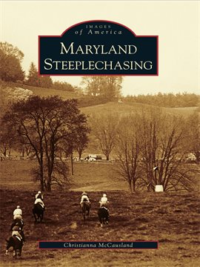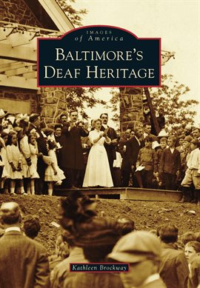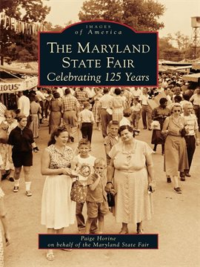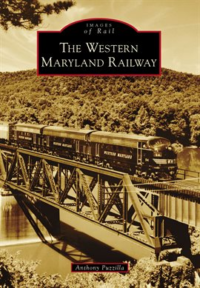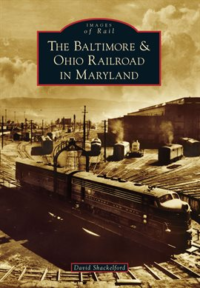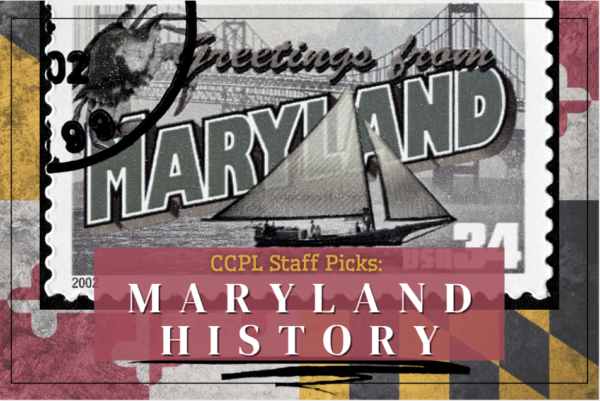
Interested in Maryland History? Check out CCPL’s recommendations for some great books on Maryland’s History from Hoopla. These publications were chosen for their quality of content and accessibility in digital format – so you do not have to leave home to enjoy these great reads!
Maryland Steeplechasing by Christianna McCausland
Each spring, thousands of spectators clamber onto hillsides with picnics and binoculars to watch steeplechase racing, a fast-paced equine sport born out of the fundamentals of fox hunting. Since 1894, when the first Maryland Hunt Cup was run, the month of April has been synonymous with steeplechase racing. Starting with the Elkridge-Harford Hunt races and continuing with the National Steeplechase Association- sanctioned “Big Three” races–the My Lady’s Manor, Grand National, and Maryland Hunt Cup–the countryside buzzes with horses and fans every Saturday throughout the month. Images of America: Maryland Steeplechasing traces the history of Maryland’s other triple crown of racing, bringing together images of Maryland’s three most-coveted races for the first time in one volume.
Maryland’s Skipjacks by David Berry
Part of the Images of America series
Chesapeake is an Algonquian word meaning “great shellfish bay,” and for decades, the oyster was the undisputed king of Chesapeake Bay shellfish. Early settlers reported them to be as large as dinner plates, and the reefs or rocks in which they lived were large enough to be hazards to navigation. In 1884, fifteen million bushels of oysters were harvested and shipped around the world. The skipjack was the perfect vessel for sailing into the Chesapeake Bay’s shallow waters and dredging for oysters, and each winter, hundreds of these wooden craft set out across the bay’s cold waters. The oyster population of the 21st century is a fraction of what it once was, and the skipjacks have disappeared along with them. No longer economically viable, the boats have been left to rot in the marshes along the bay. Only 25 boats are still operational, and fewer than five still dredge.
Baltimore’s Deaf Heritage by Kathleen Brockway
Part of the Images of America: Maryland series
The booming job market and beautifully designed city of Baltimore attracted many families and individuals to the area in the 19th century. Several of these transplants would become prominent figures in the Deaf community. George W. Veditz, an early American Sign Language filmmaker and former president of the National Association of the Deaf; Rev. Daniel E. Moylan, founder of the oldest operational Methodist church for the deaf; and George Michael “Dummy” Leitner, a professional baseball player, all influenced Baltimore’s growing deaf population. Through vintage photographs of successful organizations and sports teams, including the Silent Oriole Club, Christ Church of the Deaf, the Jewish Deaf Society of Baltimore, the Silent Clover Society, and the National Fraternal Society for the Deaf, Baltimore’s Deaf Heritage illustrates the evolution of Baltimore’s Deaf community and its prominent leaders.
Maryland In The Civil War by Mark A. Swank, Dreama J. Swank
As a border state between the North and South during the Civil War, Maryland’s loyalties were strong for both sides. The first casualties of the war occurred during the Baltimore Riot of April 19, 1861, when members of the 6th Massachusetts Regiment were attacked by Confederate supporters while traversing through the city on their way to protect Washington, DC, from attack. Ten days later, Maryland chose not to secede from the Union by a vote of 53-13. On September 17, 1862, near Sharpsburg, one of the largest and bloodiest battles of the Civil War took place at “Bloody Antietam.” At the end of the day, nearly one in four men would be a casualty of the battle, making it the bloodiest day in American military history. There were over 75 skirmishes, raids, and major battles that took place in Maryland during the Civil War. Through vintage photographs, Maryland in the Civil War shares the state’s rich military heritage.
The Maryland State Fair by Paige Horine
According to Gov. Robert L. Ehrich Jr., “{The Maryland State Fair} is an annual opportunity as Marylanders to come together to celebrate the history, tradition, and charm of our State during the best days of summer.” The Maryland State Fair has continued the tradition of delighting Marylanders near and far since the late 1800s. Hosting governors to 4-H’ers, farm animals to farm hands, home arts to computer arts, the fair has always promised something for everyone. Fair favorites such as the sweet, intoxicating scent of warm cotton candy and the heartthundering excitement and majesty of Thoroughbred racing were as much a part of the Maryland State Fair 125 years ago as they are today. Readers can find it all in The Maryland State Fair: Celebrating 125 Years.
The Western Maryland Railway by Anthony Puzzilla
The Western Maryland Railway was never a large Class 1 rail carrier, but, during its 131 colorful years of existence, it provided extremely fast, efficient, and reliable freight; coal-hauling; and passenger service in the states it served. This book contains images from the history of this remarkable railroad. It also provides the reader the opportunity to see how the legacy of the Western Maryland Railway is being maintained and remembered even today at some of its well-known train stations, such as in Cumberland and Union Bridge, Maryland, now home to the Western Maryland Railway Historical Society (WMRHS). The Western Maryland is now gone, but, through the wonderful images captured and preserved by the WMRHS and private archival photograph collections, the dream of the railway will live on.
Maryland In World War I by William M. Armstrong
The First World War was an unprecedented event, and some of its effects on the state of Maryland can be seen to this day. Maryland’s civilian contributions included agricultural and industrial production, providing goods ranging from canned oysters to light artillery pieces. Wartime industrial requirements led to the creation of entire communities, including Dundalk. Maryland hosted a variety of military facilities, many of which are still active. The largest was Camp Meade, a virtual city, one of 16 new National Army training cantonments that sprang up in a matter of weeks in the summer of 1917. Other major facilities included the US Naval Academy, Fort McHenry, Naval Proving Ground Indian Head, and the new Aberdeen Proving
Ground. The state’s military contributions also included regional units of the National Guard and new National Army, which fought during the most deadly battle in American history, the Meuse-Argonne Offensive.
Southern Maryland’s Historic Landmarks by Christopher R. Eck
Southern Maryland is made up of a collection of peninsulas covered in low rolling hills, fields, forests, swamps, and waterways leading to the Potomac River and the Chesapeake Bay. As such, this area enjoyed relative isolation and small population for over three centuries despite its proximity to cities such as Alexandria, Annapolis, Baltimore, and Washington. Those who did settle here developed a close connection to its farms, waterways, and natural remoteness. Southern Maryland, known for the state’s earliest Colonial settlements, is composed of three of the state’s oldest counties: St. Mary’s, Charles, and Calvert. Although largely agricultural and maritime in outlook, this region was also the birthplace of the nation’s ideal of religious freedom and many of its greatest citizens, including leaders of the Revolution, the early national government, and the state. Many of their homes and churches survive as historic landmarks, or their existence has been documented and preserved for posterity.
The Baltimore & Ohio Railroad In Maryland by David Shackelford
Incorporated in 1827, the Baltimore & Ohio Railroad (B&O) was one of America’s first railroads, and Maryland was its heart and soul. The B&O’s creation was a tangible symbol of the Industrial Revolution, representing commerce and progress to towns along its route. Its headquarters and operations, centered in Baltimore, provided years of economic growth for the port city. This book contains images of well-known stations in Maryland, including Ellicott City Station, Gaithersburg Station, Camden Station, and the Mount Clare Shops-a self-contained industrial city, now home to the B&O Railroad Museum. Some stations still exist and are home to small museums or restaurants; others no longer stand, but images of them will remind even the casual historian of a time when railroads were a part of everyday life in America. Take a step back in time and revisit the sites, stations, and trains of the B&O that were once part of everyday life in Maryland and remember the glory of a bygone era.
Wild Women Of Maryland: Grit & Gumption In The Free State by Lauren R. Silberman
The daring women of Maryland made their mark on history as spies, would-be queens and fiery suffragettes. Sarah Wilson escaped indentured servitude in Frederick by impersonating the queen’s sister. In Cumberland, Sallie Pollock smuggled letters for top Confederate officials. Baltimore journalist Marguerite Harrison snuck into Russia to report conditions there after World War I. From famous figures like Harriet Tubman to unsung heroines like “Lady Law” Violet Hill Whyte, author Lauren R. Silberman introduces Maryland’s most tenacious and adventurous women.

